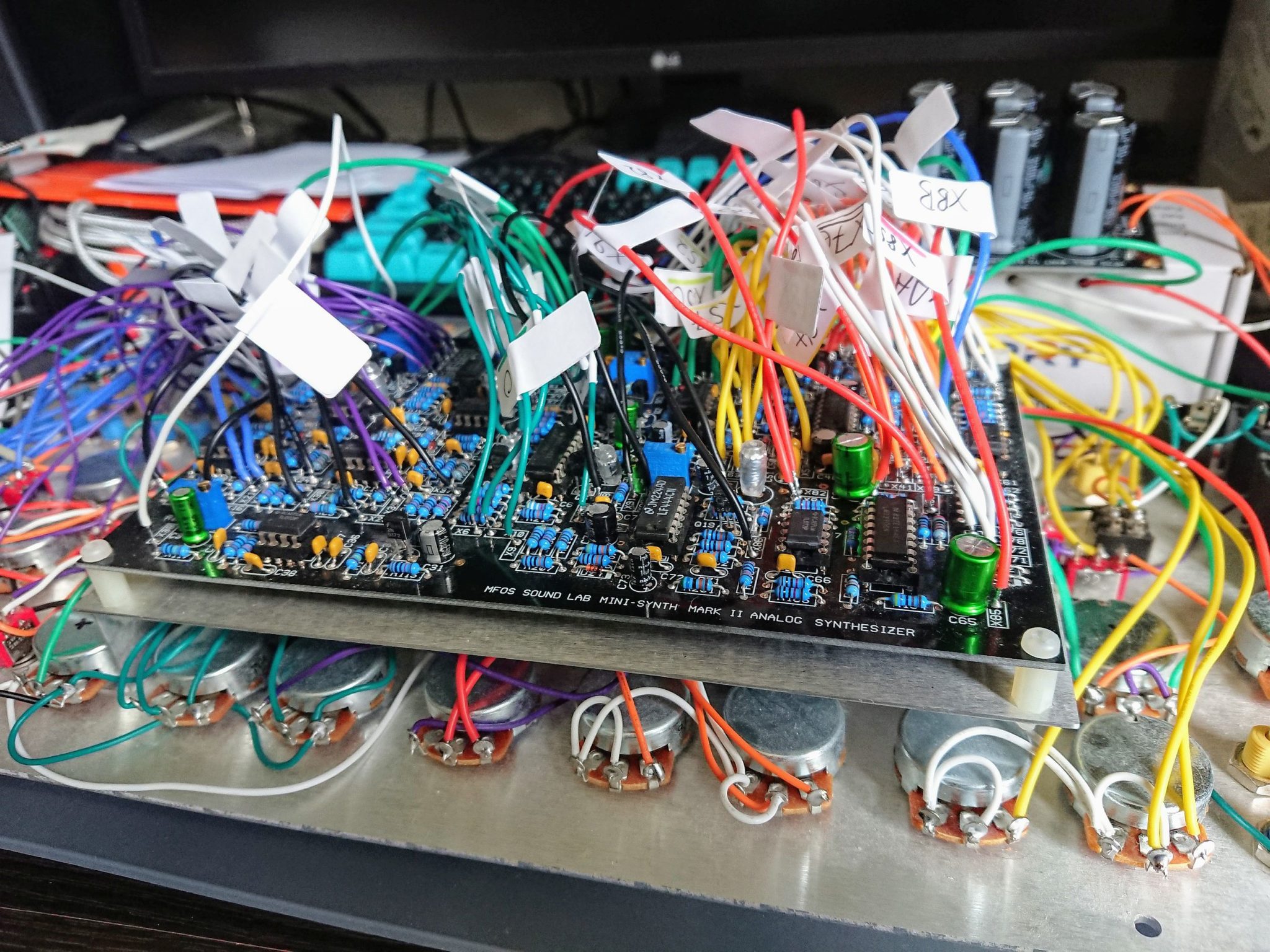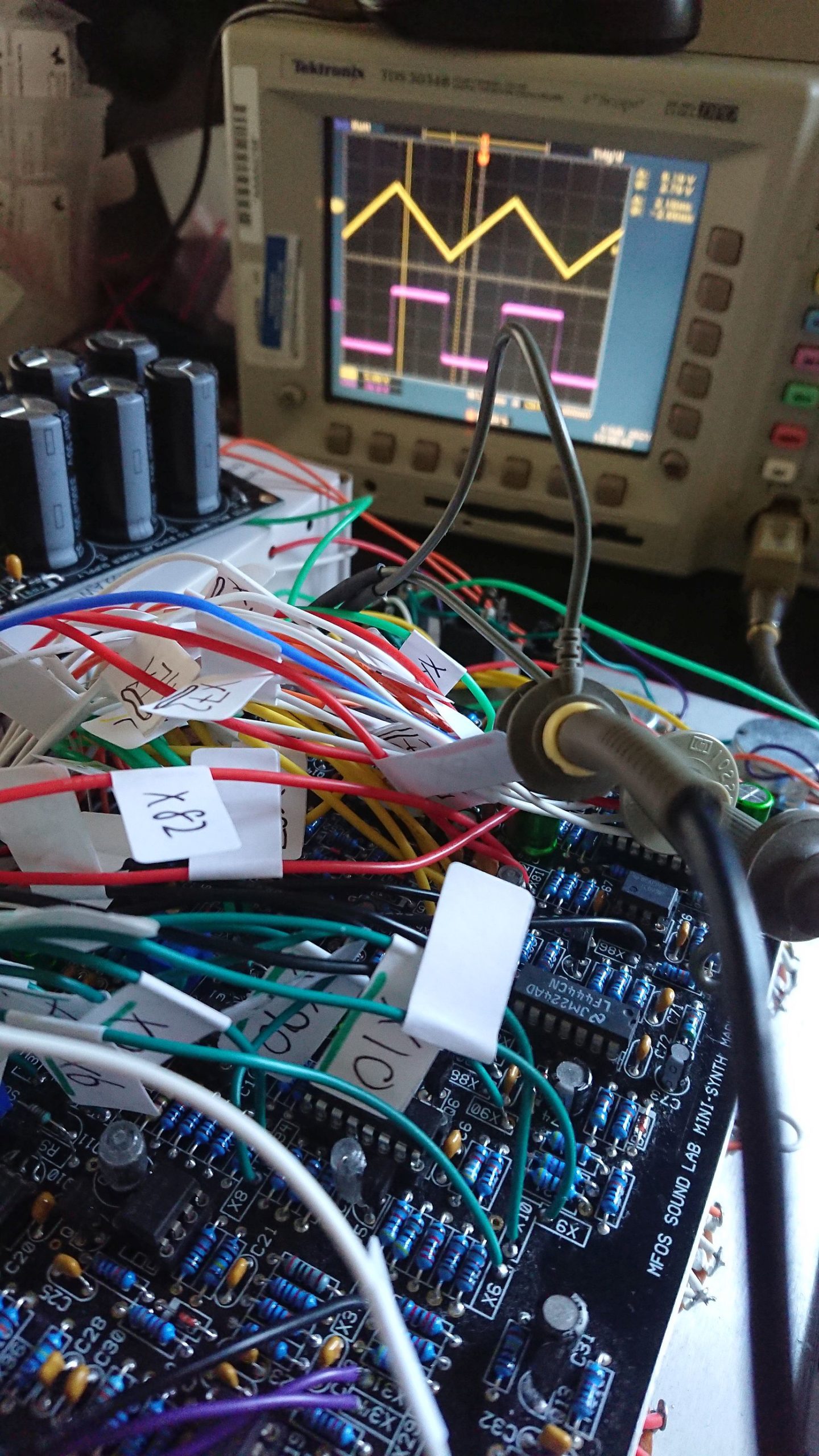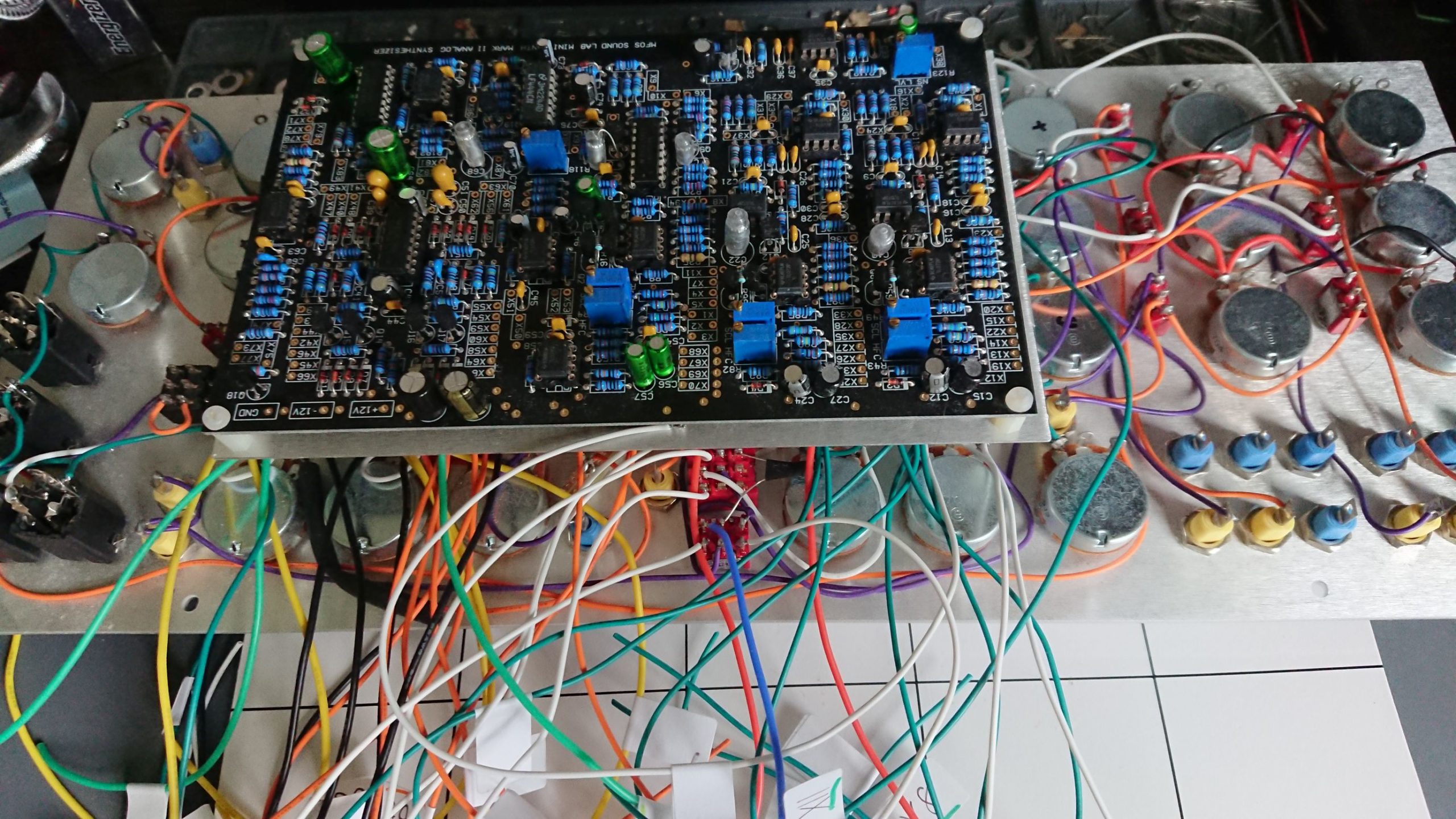

Posted by Kristian Golding on February 3, 2021

Posted by Kristian Golding on February 1, 2021
I tested the power supply yesterday and today connected it to the rest of the synthesizer. And wouldn’t you believe – things appear to be showing some signs of life! A couple of LEDs are not blinking – I would find it hilarious if I wired them up the wrong way – but VCO 1, the white noise generator, the, ADEG 1 and ADEG 2, and the LFO, are all putting out the correct waveforms. VCO 2 is doing something completely weird that is going to be “fun” to debug.


Posted by Kristian Golding on January 29, 2021
All the wiring for under the board is done, allowing it to be mounted and the wires as seen in the photo to be soldered to the board.

Posted by Kristian Golding on January 11, 2021
As I’m fresh-out of Android development boards, I decided to try and repurpose a Raspberry Pi 4 for Android experimentation in preparation for when the next version of this book comes out: http://newandroidbook.com/. I had originally tried this with my Raspberry Pi 3A+, but only found real support for the 3B.
First, you need a version of Android that is customized for the Pi 4 . I used this repo and followed the guide: https://github.com/android-rpi/device_arpi_rpi4
Note: when formatting the SDcard, this is how I did it. First, I listed all disks to find where my SDcard existed, which was /dev/sdd:
sudo fdisk -l
My disk was not empty, so I removed the existing partitions, using fdisk.

Now to create the partitions as specified by the guide, i.e:
# Prepare sd card Partitions of the card should be set-up like followings. p1 256MB for BOOT : Do fdisk : W95 FAT32(LBA) & Bootable, mkfs.vfat
p2 640MB for /system : Do fdisk, new primary partition
p3 128MB for /vendor : Do fdisk, new primary partition
p4 remaining space for /data : Do fdisk, mkfs.ext4
Set volume label for /data partition as userdata : use -L option of mkfs.ext4, e2label command, or -n option of mkfs.vfat
The fdisk command is again used to create the partitions:

(Forgot to show making the /dev/sdd1 partition a boot partition)

To set up the file systems correctly, I ejected/inserted the SDcard, and ran the following mkfs commands. The first makes /dev/sdd1 a vfat boot partition, and the second makes /dev/sdd4 an ext4 partition with label ‘userdata’.


I then formatted the DOS partition:

After formatting, I copied the system and vendor images across to their respective locations as shown in the guide. To copy files to the DOS partition, it had to be mounted (I made a directory /mnt/rpiboot):

And then I followed all the commands for copying to the boot partition, the result of which looks like:
